As we get older, we know that when crossing the road, it is important to look both ways first, some strangers can be talked to, and first opinions can sometimes be deceiving.
Children don’t know this, that’s why they are children - in the process of growing up, every young member of society learns responsibility. You need to carry it for yourself, and this means monitoring your own behavior and not forgetting about other people.
Today Tlum.Ru will tell you what is important for every parent to teach a child: rules of conduct on the street, in transport, and tips on what else to do in an unfamiliar situation.
An important clarification: don’t let your anxiety interfere with your child’s normal growth, so you read the news and don’t let him go anywhere until he reaches adulthood, but what next? We recommend a cool head and maximum adequacy, try not to rush from one extreme to another.
What a child should know before he finds himself on the street alone
Traffic Laws
Introducing your child to the basic rules of the road is usually not difficult. Together with him you go to kindergarten, to the store, to visit, and have crossed the road more than once. This is the most appropriate moment to explain to the child and show by example how to behave on the roadway. As soon as the baby understands this, you can ask him what to do, where to stand, what to look at.
In my opinion, a child should know the rules of behavior “with reserve”. You should not go around the bus or tram either in front or behind - we go to the pedestrian crossing. Between a zebra crossing and a traffic light, we choose the latter. We cross the road in two steps, stopping in the middle - only as a last resort.
Observe that in the yard, especially near your home, the child pays less attention to transport. Yes, the speed of the cars here is much lower, but the child must understand that it can appear suddenly from around the corner, move off the spot, and block the view
You can't communicate with strangers
The fact that a child should not talk to strangers, take anything from them, much less go somewhere with them are rules that are clear to everyone. But unlike behavior on the road, the baby encounters such situations much less often. Therefore, preparing a child for such situations will be rather theoretical.
You can use a game for these purposes and act out scenes. The child must learn that it is forbidden to go somewhere with strangers or get into a car with strangers, even if they say they know their parents. It is better to explain to the child that if he is approached, he must maintain a distance of 2 times an outstretched arm, and never come close.
While you and your child are together, try to avoid situations where a stranger treats your child with candy or addresses him personally. If the parent considers it acceptable to accept the treat, he must do it himself and give it to the child. It is acceptable to answer questions for the baby. The main thing that can be demonstrated is that unfamiliar adults talk to adults.
Who can I contact for help?
It is important that the child knows in advance who he can turn to in a difficult situation. Do not intimidate children with the police - the child must understand that people in uniform are the first adults to whom he can turn for help.
If a child gets lost or gets lost, a ban on talking with strangers will also work against parents. We shouldn't forget about this. Therefore, despite the ban on communicating with strangers, you should not intimidate your baby with them either.
The child should know that he can turn to adults for help if there are no employees in sight. Learn one phrase: “Hello, I’m lost, please call my mom.”
Contact Information
The child must know his home address, last name, first name, patronymic of his parents, and their telephone number. Such information can be learned from a very early age. A situation where it may be needed is possible long before you let the child go alone. A child may get lost in a store, fall behind a kindergarten group on an excursion, jump out or jump into public transport.
How to behave in different situations
It is impossible to sit down and explain to your child before leaving the house how to behave in all possible situations that he may encounter. Even if we assume that parents will theoretically do this, the child will not learn such a volume of information.
During walks, pay your child’s attention to certain points. The guys climbed a tree - you shouldn’t do that, you might fall and get killed
The dog is walking alone without its owner - there is no need to tease it and attract attention, it is better to freeze in place than to run.
Parents are also able to observe the child’s interactions with peers and correct his behavior even during walks together. Therefore, while you are next to your child, try to analyze this or that situation from the point of view of “if the child were alone.” This will allow the baby to acquire certain experience of behavior in various circumstances in advance without the participation of parents.
While you are nearby, give your child some freedom, watch him. At first, before going on independent walks, my son walked “alone,” and his mother went out just “to read in the yard.” In a similar way, you can let your child go to school “by himself” the first few times. Walk behind him and watch. This will allow the parent to calm down somewhat when he makes sure that the child can make a decision on his own, and to correct his actions if the “alone” baby does something wrong.
Dangers in transport
No. 1: Direct transport
No games on the edge of the platform or at the bus stop, it is important to maintain distance and do not forget that other people also use transport - who may stumble, stumble, get distracted, or even deliberately try to create an emergency situation with someone else's participation. Taking care of yourself and being careful in this case will not be enough; let the child watch the others.
#2: People

You are at work, it’s time for the child to go to school, which means that, at best, you will need to use the bus, and at worst (figuratively speaking) also the metro or even trains. Teach your child not to get carried away by thoughts, games, books or music. The same fight may break out in the cabin or carriage, and it is better to have time to dodge the participants.
The ways of talking with annoying people may not be varied; here it is important to use a good voice, so that a boy or girl can say “Leave me alone” loudly, clearly, loudly and without undue modesty, and the people around them notice the suspicious citizen.
Teach your child not to leave his pockets open, and to take off his backpack during long journeys from point A to point B - this way he will irritate other people less, and attempts to check if there is something interesting there will be minimal from the very beginning.
There are other types of problems that the child will have to solve first; we remind you that he is alone, without your accompaniment, and must be aware of the risks.
What is important to teach a child?

A preschooler should know: what his and his parents’ names are, and what address everyone lives at. Ideally, you would also remember the phone number of mom, dad or any other close relative, but this depends on the child. Lost kids either loudly announce to the world that they are alone, or they go silent. It is important to attract as much attention as possible.
What parents need to do: make sure that the baby distinguishes their faces from the faces of other people. If a stranger approaches, it is important to inform everyone that this is not mom, not dad, or even great-aunt. Make sure you have coordinates for communication - put the appropriate paper (you can even laminated it) with contacts in your child’s pocket. Now they sell clothes with a sewn-in place for contact, do not be lazy to fill it out and update it periodically.
The schoolchild should know: everything is the same and the cell number, as a rule, schoolchildren are already better at memorizing than preschoolers. At the same time, the student should not be afraid to ask for help - police officers, mothers with children, store clerks. In the Moscow metro, special sticker marks have been installed for lost people, indicating that at this point you can stop and wait for the arrival of a police officer or station duty officer, who will help reunite with their parents.
There don’t seem to be many rules, but in reality everything is more complicated. It is worth striving for a trusting relationship between parents and children. Does your child understand that you are not taking care of him for show, but are really worried about his safety? Great, then the following points will be easier to remember:
- Before leaving home, let the child warn his parents where he is going, with whom and for how long he will be away. Are you planning to return later? Arrange a meeting - this will make everyone calmer;
- the child should not tell strangers anything about himself - where he is going, what his name is (it is not forbidden to come up with a fictitious name). It is important to tell especially annoying people in time that their attention is unpleasant;
- if a suspicious company appears ahead, it is better to move to another street, adults often do this, and there is no shame in children either;
- After the doorbell rings, the child is asked to go out and help reach the neighbors, what should I do? Ignore, or better yet, write to the neighbors themselves (if you have contact), try to remember the face - through the peephole, don’t open the door! Reporting that there are no adults is also not worth it;
- had to walk along the road? It doesn’t matter - the main thing is that the transport is moving towards, and not in the direction of travel;
- when entering the elevator, make sure that there is no one on the landing;
- in the elevator you don’t need to turn your back to a stranger, so you can see what he’s doing, where the dispatcher’s button is - everyone knows;
- The desire to wait until all the neighbors have left the landing is not just in adults; in this way we ensure our safety when we ourselves want to go out - let no one breathe down our backs;
- the “fight or flight” state is a normal reaction; if a child cannot physically fight back and doubts his own strength, then let him use speed and run away from trouble.
The safety of the child is in his hands and in the hands of his parents. The better the preparation for an atypical situation, the less stress you will experience. Regarding safety rules, there is more than one training manual from which it is easy to learn a lesson. For general peace of mind, there are sports sections and self-defense courses, just please coordinate their attendance with your child, in case he is not yet ready to do such things and it is easier to turn to other, less aggressive advice that we have already given.
Be careful and do not take the danger to your own life as a joke. Anything can happen. We wish everyone safety!
To read more useful materials for parents, subscribe to our Yandex.Zen channel. We also launched Telegram - join if this format is more convenient for you.
Where to start teaching your child how to behave safely on the street?
In order for training to be effective, it is necessary to choose forms and methods that will correspond to the age and level of development of the child.
- For children 4-6 years old, the most appropriate game forms using dolls and other toys (for example, you can play a role-playing game on the topic “What to do if a doll is lost?”);
- from the age of 7, you can act out various scenes with children that describe possible ways out of dangerous situations;
- You need to discuss with a teenage child in which places in your area he can walk with friends unaccompanied by adults, study with him the emergency numbers, and options for where and to whom he can turn in case of danger.
You should not focus on the terrible events that are happening in the world and intimidate the child. Apart from a feeling of fear of the outside world and distrust of it, this will not form anything
It is better to focus on the rules of safe behavior, encourage the child to tell an adult about his problems, and maintain emotional contact with him
Trust in a parent is a very important condition for them to be able to find out in time about negative moments in the child’s life and help him
In addition, perhaps the most important condition for successfully teaching children safe behavior is their own example, which adults demonstrate. Agree, the rule “you can cross the road only when the light is green” doesn’t sound particularly convincing from the lips of someone who crosses when the light is red.
When talking about safe behavior on the street, we must not forget to tell the child that some factors and aspects of his behavior can provoke unpleasant situations. For example:
- expensive jewelry or cell phone;
- house keys in a visible place (for example, on the neck);
- conversations with strangers and unfamiliar people.
It is very important to regularly have preventive conversations with your child about places of potential danger in your area. These can be bodies of water, forests and plantings, dangerous animals, poorly lit areas
Conversation “Safety on the street and at home”
Conversation on the topic:
"Safety on the street and at home."
Target:
deepen and systematize students’ knowledge about the rules of safe behavior and ways to get out of dangerous situations.
Tasks:
To help students develop a conscious need to maintain their health.
Develop the ability to analyze possible dangerous life situations and the ability to make the right decision.
To promote in students attentiveness, responsibility for their actions, and resourcefulness.
Progress of the conversation.
Introductory speech by the teacher.
Every person wants his rights not to be violated and to feel safe. We want to believe that the majority of people in the world, in our country, in our city are respectable citizens who are guided by the principles of morality and morality, act according to their conscience, take into account the opinions of other people, do not violate their rights, and obey the law. If every person lived and behaved like this, then there would be no need for police, courts, or prisons. But, unfortunately, this picture is far from reality. Various crimes and offenses are constantly being committed in the world. None of us are immune from any crime being committed against us. Preventing trouble is always better than looking for a way out of the current situation later. There is a proverb: “Forewarned is forearmed.”
How do you guys understand this proverb?
(Children's answers may be as follows: when a person knows what can happen, he is ready for it, has time to react, has the necessary information, can prepare physically and mentally).
That’s why today we’ll talk about what can happen on the street, what dangers may lie in wait for you and how you should behave.
What dangers do you think might await you on the street?
(Children’s answers may be as follows: aggressive young people, high school students, peers can cause harm, maniacs, drug addicts, we can “get into history” if we go far from home, to an unsafe place, we can get lost, etc.).
Today you and I will arm ourselves with the necessary knowledge in order to avoid all these dangers, and if something happens, then you will know how to act correctly, how to behave.
First of all, it is necessary to observe safety measures:
Curfew.
Children are prohibited from being in public places unaccompanied by adults from 23.00 to 6.00 (in winter - from 22.00). A child who walks in public places at night is returned to his parents or persons replacing them. In this case, adults bear administrative responsibility. If the child does not have parents or the adults responsible for him do not contact him within three hours, the minor is placed in the nearest specialized institution for children in need of social rehabilitation.
What other security measures can you name?
(Children’s answers may be: do not walk along deserted streets, do not get into cars with strangers or unfamiliar people, have protective equipment with you, etc.).
General safety precautions:
Pedestrian traffic rules, like traffic rules, must be strictly followed.
Never accept gifts, money, sweets, invitations to ride in a car, etc. from strangers. It is especially dangerous to agree with them to go somewhere, travel, provide them with any help (for example: bring things, find a cat, dog, take a photo, etc.).
Nowadays, when terrorist attacks occur very often, be extra careful on the street: do not touch or open unfamiliar objects: packages, bags, packages. And if you find suspicious objects, then inform the adults who are close to you, or immediately call the rescue service. Whatever happens to you on the street, first of all tell your parents or other close people.
Safety rules and self-defense.
What you see in the movies may not always give you the correct ideas about self-defense. For example, a girl walks past cars parked in the parking lot. Suddenly some guy jumps out from behind the SUV and rushes at her. The girl hits the bad guy in the eyes with her keys or kicks him in the groin. While he writhes in pain, she runs away.
This movie. In life, everything looks different: when a girl is about to strike a villain with her hand or foot, he, knowing what awaits him, grabs her by the hand (or leg) and throws her off balance. Enraged by her attempts to resist, he throws her to the ground, and now she has virtually no chance to defend herself.
In a dangerous situation, the main thing is to do everything possible to avoid fighting and fighting when someone threatens or attacks us. Self-defense is the use, first of all, of the mind, not the fists.
Teenagers (boys and girls) who are under threat of physical violence and intend to fight back may actually make the situation worse. An attacker who is already mentally prepared can become completely uncontrollable and cruel. Therefore, the best way to deal with an attack or threat of attack is to try to avoid it. This way, you are at the least risk of causing yourself physical and mental harm.
One way to avoid a potential attack is to trust your instincts. Your intuition, combined with common sense, can help you get out of trouble. For example, if you are jogging in the park and suddenly feel like you are being followed, perhaps your intuition is telling you that something is wrong. Your inner voice tells you that it is best to return to where there are more people around. Listen to him!
Intruders aren't always strangers who jump out of dark alleys. Unfortunately, teenagers can also be attacked by people they know.
In a dangerous situation, you need to speak or act in a way that prevents the situation from getting worse. For example, giving your money to a robber instead of fighting or running. If someone is following you on the street and tries to talk to you when no one is around, you can delay the attack by agreeing with them and engaging in dialogue. You can then redirect your opponent's attention (“Oh, there are my parents!”) and calmly resolve the situation.
In order for a girl to avoid unsafe attention to her person, there is no need to provoke him in the first place.
A short skirt, tight blouse, and bright makeup are quite appropriate in situations that do not involve undesirable consequences. You can look like this at a house party, a school party, or in the company of very close people.
However, you need to remember, for example, that according to statistics, a large percentage of sexual assaults occur precisely from acquaintances and close friends. Sexual predators make up only a small percentage of rapists.
It is better to come to various kinds of youth gatherings (parties) not alone, but with close, trusted friends. You have to leave with them, no matter how great the desire to dance and have fun. In the old noble etiquette there was a recommendation “not to give a reason.” This recommendation today constitutes the first condition for a girl’s safe behavior.
Not only a girl’s appearance, but also her behavior can give a reason. Cheerfulness, loud laughter, or other displays of emotion attract the attention of others. And if some people perceive such behavior as a manifestation of bad manners, others perceive it as a sign of accessibility.
Recommendations for girls (also suitable for boys):
– do not be on the street alone in the dark;
– avoid passageways, courtyards, uninhabited areas, and territories;
– do not use the underground passage if it is poorly lit or sparsely populated;
– never, under any circumstances, get into a car with strangers or unfamiliar people;
– never, under any circumstances, enter other people’s houses or apartments on your own, even if you are earnestly asked to do so (you need help, babysit, call);
If you still have to walk alone in the dark or through a deserted place, take the following safety measures:
– clothes should not restrict your movements;
– shoes should be comfortable for running; high-heeled shoes should not be worn;
– hair should not be loose (loose hair can easily be wrapped around your hand in case of physical violence);
– You should have personal protective equipment with you.
Recommendations for young men
(tips to prevent a fight)
– do not behave defiantly;
– do not demonstrate arrogance, superiority, or contempt to others;
– do not bully the people around you, even if you really want to demonstrate your prowess in front of your companions, and especially your female companions. Firstly, this will not elevate you in their eyes, and secondly, you don’t know who you’ll run into;
– do not openly carry things with you that have great material value; they may be of interest to lovers of easy money;
– be vigilant, try to avoid meeting with a large company, tipsy or drunk people;
– avoid deserted places if you are walking alone, and even more so if you are accompanying a girl. In the first case, you can still escape, in the second, this option is excluded;
– try to avoid physical confrontation until the last moment;
– when aggression is shown towards you, stay calm and confident in yourself. Both extremes of behavior are undesirable: your counter-aggression can only provoke the attackers; your humiliatingly begging position will inevitably put you in the position of a victim. A person who behaves like a victim is in all situations the target of an attack;
- if a fight is inevitable, the main thing to understand is: only people with an inferiority complex, offended by life and people, fight to the bitter end (the exception is the defense of a child, a woman, a disabled person, when there are no other methods of defense left). A real man will find a way to stop a fight as soon as possible.
- Take self-defense lessons. The best way to prepare for an unexpected attack from the outside is self-defense classes. A self-defense instructor will teach you how to properly assess an extreme situation and decide what to do to resolve it. He will teach you special techniques to stop an attacker's aggression and other things you can do to get out of trouble unscathed. For example, attackers usually anticipate that their victim may be hit in the groin or eyes. A good instructor will teach you ways to surprise an aggressor and take him by surprise.
The most important thing that a self-defense practitioner will gain from training is self-confidence. The last thing you need to think about during an attack is: “Can I really do this?” It is much easier to take action in an emergency if you have previous training experience.
Self-defense lessons will give you the opportunity to practice techniques and combat tactics. If you attend training with a friend, you can continue to practice on each other at home to retain the techniques in your muscle memory and mind even after the training is over.
What to do if it was not possible to avoid danger? If, for example, you are walking along a dark street and feel that someone is following you, chasing you? Children's answers may be as follows: you need to run away, scream, call for help, try to turn onto a more crowded and well-lit street (if possible), go to a store or pharmacy.
Change your route, take a different road (as long as it is not deserted). Pretend that you forgot something and turn back, stop to adjust your clothes, shoes, etc. (this way you will check if you are really being followed or confuse the attacker), change your behavior, be unpredictable, turn sharply to face the person and ask “What do you want?” / “Why are you following me?”
Try not to enter the entrance or elevator with suspicious people; wait for other people to enter there.
When you see a group of young people ahead who may be aggressive, when passing by them, behave confidently, but not defiantly, look straight ahead (not at the floor - the look of the victim, but not into the eyes - a defiant look).
If something has ever threatened you or is now threatening you, and if this danger comes from someone you know, someone close to your parents (which often happens), then be sure to tell your parents about it.
How to get out of dangerous situations? The teacher suggests situations, and students discuss ways out of them.
A boy (young man) walks along an unfamiliar street in the evening; a group of guys blocks his way. What should a boy (young man) do? No need to wait for them to say something, start acting (if you see that they are aggressive). It’s better to turn off the road, take a different path, go to the nearest store or pharmacy, talk on the phone - play a role - as if someone is coming to meet you, for example, your older brother or dad should meet you, speak louder so that the intruders can hear. In a critical situation, show all your acting abilities: you can pretend that you recognize this person (the offender), as if he were your old friend, and begin to behave accordingly. This will help distract the offender, mislead him and you can leave or run away. If you understand that you can simply run away, then it is better to do just that. This is not a shame, this is a necessary measure to avoid serious injury, or even loss of life.
A girl (girl) goes home, hears that a man is following her, is clearly following her, and follows her into the entrance. How should she behave? You can turn around sharply and say or ask something. If you feel confident, then play some role, for example, make a scared expression on your face and say: “what is that on your face / with your face?”, act out an epileptic seizure, pretend to be crazy, etc., this will alienate the offender, mislead you and allow you to escape or use personal protective equipment against the offender.
How to behave if you are attacked? (Children's answers could be: use a gas spray, run away, fight, etc.).
Of course, you need to find an opportunity to escape (and to do this, distract attention in any way). If you couldn’t do this right away, then use any objects and techniques to protect yourself, and of course, call for help. Calls “Help! Help!” do not always help. Save!”...Call your parents for help - this will scare the offender - he will think that you live somewhere nearby and your parents can hear you and come to the rescue. Every person understands, including the criminal, that parents will save their child at any cost. People who hear that a child is calling their parents for help will respond to your call faster, because... they will form an association with their own children. If you find yourself in a crowded place, it is better to ask for help not from all the people present, but from someone specific (since there is such a phenomenon as the distribution of responsibility - when there are many eyewitnesses, then everyone expects active actions from someone else and everyone, As a result, it is inactive).
Home safety.
The plot-role-playing game “Home Alone”.
The children are given situations on the cards to act out scenes. And the audience must comment on the actions of the participants, justify how correct they were.
Situation 1. Vasya is alone at home. The phone rings. The boy picks up the phone and hears an unfamiliar voice: “Hello, are your parents at home?”
Vasya’s answer: “Yes, at home, but they are busy. What should I give them? Who and where should I call back?”
Situation 2. Alina is home alone. Ring (knock) on the door. She looks through the peephole, sees a stranger, asks: “Who’s there?”
The answer was: “Open up, police! The person is feeling unwell, we’ll call an ambulance from you.”
Alina’s answer: “Tell me what happened, what address, I’ll do everything myself.” The girl goes to the phone and calls an ambulance.
Situation 3. Sasha is alone at home. Someone is trying to open the door with a key. Sasha asks: “Who’s there?”
The answer was: “Plumbers!” We are checking the heating system!
Sasha’s answer: “I don’t know anything. Dad will be back from work in an hour, then come.”
They continue to open the door with the key. Then Sasha quickly barricades the door with improvised objects, calls 02, then runs to the window and asks for help.
Well done guys, you commented correctly on these possible situations.
If you find yourself at home alone and the doorbell rings, don’t rush to open it, look through the peephole first; if you don’t know the person, don’t open it, move away from the door and call your parents at work.
If unknown persons are rushing into the apartment, immediately raise the alarm: call the police (02) or immediately the rescue service. Open the window, shout to people “Fire!” (this attracts attention better), hit the battery with heavy objects, scream.
Summing up the conversation.
Guys, we have dealt with different situations with you. I hope that you remember what to do if trouble happens to you. To conclude our conversation, let's create a safety formula together. Suggest what components it will include? Children offer their options, the teacher writes them down on the board, then several of the most meaningful phrases are selected, from which a safety formula is compiled.
The security formula should look something like this:
- foresee danger;
- avoid it if possible;
- if necessary, act decisively and clearly;
- fight to the last, actively, in every possible way, ask for help and provide it yourself to those who are in trouble.
What to say and how
We know something, but many have problems with wording. The main thing is to explain that in any situation the child can do something himself. And the outcome of the incident depends on this.
- Firstly, do not intimidate - there is no need to exaggerate, describing at length what a maniac can do or how much you will get sick by getting your feet wet. Say what can actually happen, but without exaggerating;
- Secondly, do not cut off a possible incident in any of the listed points. Better tell us everything. Perhaps not immediately, but in doses;
- Let's go for a walk in a crowded place - before that, tell us how to behave if you have lost your parents (and remind about this before each subsequent trip until the child remembers everything);
- If you pass by a river, talk about the rules of conduct near a reservoir and on ice;
- If you saw dogs, tell us about the animals and the threats from them;
- Of course, there are rules that should be told first - on the roadway, communicating with strangers.
Thirdly, it is important to correctly explain what the child should do (or not do!) in each specific case. Therefore, first make sure that you yourself correctly assess the way out of the situation and the child’s capabilities; Don’t think that some things are already “obvious” even to children
They are so clear to you, but the child only learns, only learns. Chew it straight
Don’t think that some things are already “obvious” even to children. They are so clear to you, but the child only learns, only learns. Chew it straight
Fourthly, find an approach to your baby, tell him about the need to know the dangers in person
For some, a simple heartfelt conversation is enough, while others will pay attention to the story only in a game or in the form of a fairy tale; Finally, be sure to test your acquired knowledge, arrange a short exam in a humorous manner, especially when it comes to communicating with strangers.
- Simulate different situations, let you or some toy be instead of something or someone who poses a threat. For example: build an impromptu house from a table, a blanket and sofa cushions and pretend that you are a stranger who wants to take the child away from this house with various pretexts;
- Teach your child to find in every situation what he can do to save himself. Having found this, he will feel confident and fear will recede a little.
Safe behavior on the street for school-aged children
For children who already walk independently or get to school, clubs, the stadium and back, there are two types of danger:
- the risk of injury due to one’s own carelessness;
- the risk of being harmed by people with bad intentions.

How to avoid injuries?
Parents should always know where their son or daughter plays on the street and what route he or she takes to school and extracurricular activities. Places where you can play and the path from home to regularly visited places need to be walked several times with your child
Along the way, you need to draw his attention to possible dangers
If possible, travel routes should be organized so as to avoid vacant lots, construction sites, and deserted places. If you have a choice, it would be preferable to slightly increase the travel time, but cross the road using an underground or traffic light-equipped crossing.
The following rules must be followed:
- You cannot play on construction sites, roofs of buildings, or on roadways;
- any explosive objects - firecrackers, fireworks, caps - can only be used under adult supervision in suitable places;
- You can only ride a bicycle in a courtyard where there are no cars, or on special bike paths in the park;
- You should not approach unfamiliar dogs, much less tease them;
- in winter, you need to wear anti-slip pads on your shoes and stay away from eaves, roofs and canopies of buildings;
- You can cross the road only at a pedestrian crossing when the traffic light is green, after making sure that there is no danger;
- Do not pick up foreign objects from the ground, especially syringes, glass, and packages.
Communication with strangers: how should a child behave?
It is also important to maintain a balance here: children should not see in everyone they meet a criminal and bad intentions where there are none, but it is also wrong to trust everyone. The most important thing is to explain that the criminal is afraid of publicity and exposure
If you suspect the bad intentions of someone you meet, you need to speak loudly, shout for help, resist
The most important thing is to explain that the criminal is afraid of publicity and exposure. If you suspect the bad intentions of someone you meet, you need to speak loudly, shout for help, and resist.
Here are some rules you need to learn to stay safe:
- You cannot get into a car with a stranger or someone you barely know, unless it is a taxi called by the parents, so that the child will not be late for the event.
- If an unfamiliar man comes into the entrance together with your child, it is better to let him go ahead and wait until he goes up to his floor or leaves in the elevator. The best option is to wait outside for one of your well-known neighbors and go up to your floor with them.
- If a stranger asks for help on the street, you need to turn to passers-by, and not rush to help yourself. When addressing strangers, the criminal will try to leave immediately.
- You cannot go with a stranger, no matter where he calls or what he promises. Criminals deceive preschoolers with the message that their parents have sent them to pick up the child. You need to come up with a “password” that the stranger should say if this is really the case. Otherwise, run, scream loudly, call for help, resist if they try to take you away by force.
- Do not give your teenager large sums of money, expensive cell phones, or jewelry if he or she is about to move independently. You should also not hang your house key on a chain around your neck. The key can be pinned by the ring to the inside pocket if you are afraid that it might get lost.
- You should not accept any gifts from strangers, including food.
- It is better to go to school and back, to a circle or section in a group. Parents can agree and take turns accompanying their children if their path passes through unsafe areas.
It is not enough to voice these rules once or even several times. They need to be repeated from time to time. Even better is to model unforeseen, dangerous situations and teach children safe behavior in practice.
Dangers on the street
No. 1: Roadway and road users
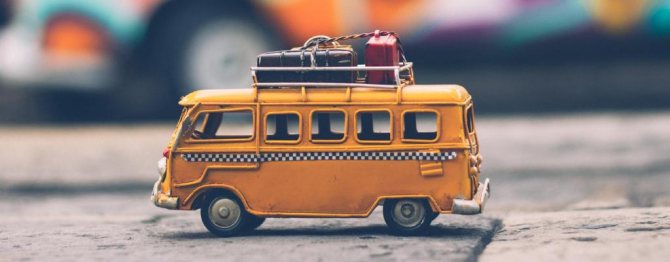
The machine is not as fragile as human bones. Nobody canceled the braking distance. It is better to avoid a disaster than to try to find ways to solve the problem. All this concerns the presence of children near the roadway.
Your task is to explain that playing near the road, crossing it in the wrong place or running a red light is a bad idea. Extremely bad. Teach your child to look both ways in any situation - when you cross the road together or when he does it without you, in a crowded place or not, with or without a controlled crossing.
#2: Friendly Strangers

“Do you want some candy?”, “Masha from the second “B” is my sister”, “I have a dog here, I’m looking for friends for her” - these and a million other variations of obviously cute phrases should not endear a child to a stranger.
Teach: you can’t carry on a conversation, you can’t take gifts, you can’t get into someone else’s car, you can’t go anywhere with a stranger, and you can’t be alone with him. Inspire your child that you will always introduce all your friends, acquaintances or parents of other schoolchildren (or kindergarteners) yourself. All others should a priori be considered, at best, liars.
A distance of one and a half meters and the desirable presence of an obstacle between the child and the stranger will give a head start in case of escape. Remember: you can't turn your back on strangers.
What else can't you do? You may be surprised, but children should not help strangers on the street - this requires calling an adult.
When entering the entrance: it is not recommended to linger - this way, anyone else can come in next without a key; You shouldn’t run into the entrance after someone; ride in an elevator with strangers (a similar point can be safely recommended to adults, because often one or two minutes will not make a difference in time). Loneliness in this case is a defense mechanism in every sense. Teach your child not to listen to music with headphones at full volume - this will help to be aware of the situation around him.
No. 3: Animals
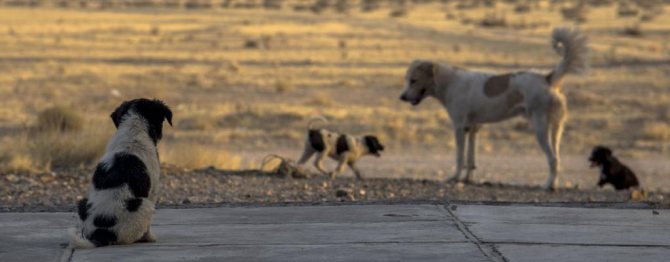
Going to the store, buying food and feeding that unfortunate couple of cats that are always hiding in the basement of your house is one thing. Teasing street dogs that have managed to form a pack is completely different; no amount of thrill is worth the possibility of becoming disabled or contracting rabies through a bite.
Set your child up for calm behavior on the street; let him, if he has such a craving for animals, learn to first ask the owner if he can pet the animal. If you refuse, you shouldn’t hang your nose; there will be someone more accommodating.
Poisonous plants
In our latitudes there grow many seemingly harmless plants that can be dangerous not only for a child, but even for an adult. Some of them are completely neutral until they are eaten - such dangerous plants for children include wolfberry, lily of the valley, with its red fruits, which are so attractive to children. A child should not be allowed to lick the yellow poisonous juice of celandine or taste the flowers of belladonna and henbane. And the beautiful trunks, leaves and umbrellas of hogweed are dangerous even with ordinary touch - they cause severe, long-lasting and painful burns.
As for nettles, touching them is very unpleasant and the child will remember such contact the first time. Especially if you show what nettle looks like. However, a burn from nettle leaves does not pose any particular danger to a child, but it is still better to do without it.
How to avoid: no matter how old the child is, tell him that in the forest, park, or even in the yard you should never put berries in your mouth without showing them to an adult. Before settling down for a picnic, inspect the area and let children go to places of particular danger.
Why don't children go out now?
Modern courtyards are empty today. Although many of them have beautiful playgrounds with colorful slides, swings, etc., only mothers with strollers walk there. It is difficult to find older children here, and there are certain reasons for this:
- Overprotection. Many parents cannot even imagine how it is possible to let a junior schoolchild (and even more so a preschooler) go out alone; they intimidate him with the numerous dangers of the street (“there are angry dogs, hooligans, drug addicts”, etc.). Moreover, in modern high-rise buildings, neighbors do not really communicate with each other: children of the same age from the same yard may simply not know each other. If previously first-graders went to school alone, today many are taken there by car or led by the hand by their mothers and grandmothers (up to grade 3–4). Children today, for the most part, are generally very dependent (for example, at 7–8 years old they still cannot heat their own food, make tea, etc.).
- Many parents are prejudiced against hanging out in the yard (although they themselves probably spent all their free time there as children). They believe that a child left unattended, “staggering” on the street, will certainly fall into bad company, hear swear words, and be persuaded to try cigarettes, alcohol, and even drugs.
- Modern children live in an era of advanced information technology. From an early age, every child has their own mobile phone with many applications and a tablet. On a TV connected to the Internet, you can find any cartoon and watch it many times. There is no need to talk about his passion for computer games. The guys have their own pages on social networks with hundreds of virtual friends, but in reality there is even no one to call on the phone just to chat.
- No later than the age of five, parents try to enroll their child in some kind of club, early development school or sports section. And this is done not because the baby has a pronounced interest in sports, drawing, vocals, etc., but simply because it is customary (so as not to lag behind your friends, so that you can post relevant photos on social networks).
- When school starts, the child finds himself even busier—lessons are added. And many parents today are overly demanding of their child in this regard (they want their son or daughter to be an excellent student at any cost).
As a result, it turns out that the child either simply does not have time to walk on the street (and parents argue: “after all, they are already taken out for walks in kindergarten or in after-school school”), or he himself does not show such a desire, being immersed in the virtual world.
Another modern trend should be noted. If earlier adults pushed their children to join the team - they encouraged them to be friends, invited groups of their child’s friends to their home, but today personal achievements are put at the forefront.
As for the danger factor, many believe that modern yards are safer for children than in former times. Today there are no unfenced construction sites, lying metal pipes, stray dogs, open hatches, exposed wires, etc. Almost everywhere, utility services monitor the lighting and broken benches. Nevertheless, the children still do not go out for walks.
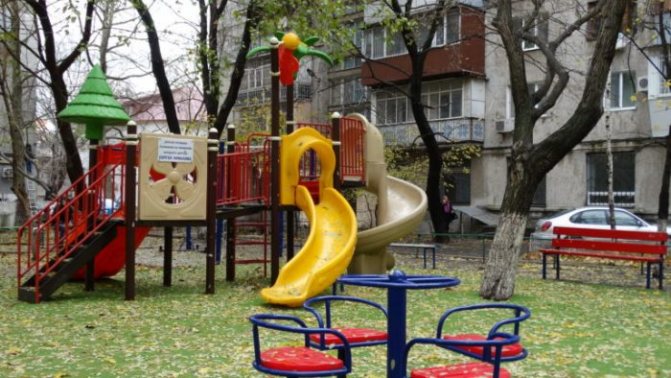
Modern courtyards are more beautiful and safer, however, children do not walk here
As the mother of a nine-year-old son, I have a lot to say about this pressing issue. The described situation is more typical for cities, especially large ones. Our family lives in a small village not far from the city, where almost everyone knows each other. And here, to my joy, children have no problems with communication. For example, near our house there is an excellent large yard with a swing, a slide, a horizontal bar, etc., and there are several other similar places nearby. There are always a lot of children of different ages here (both kids and schoolchildren), they hang out after school, during the holidays. My son started going out alone at the age of six with the same kids: at first he spent time only in his yard (I periodically looked at him from the window). Today, he and his friends walk quite far, and can go on a bike ride with the guys. At the same time, the boy is always in touch - I can call him on the phone at any time. Meanwhile, when one of our neighbors’ grandson came from the city during the summer holidays, he complained that he didn’t go out at home at all, because there was simply no one with him, it wasn’t accepted there.
Start date
Training must be appropriate to the child’s age and level of psychological development.
You can start teaching the rules of safe behavior with a playful form; this technique will be preferable for children 4-6 years old. Children often associate themselves with toys and willingly get involved in the process. You can come up with a game “What to do if you are lost?” The main character can be your favorite doll or toy.
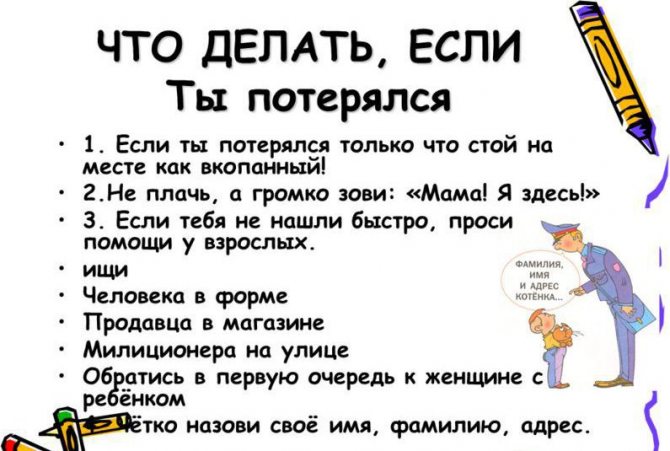
Teach your child what to do if he gets lost
- For children of primary school age there will be an interesting role-playing game. You can act out a scene about what to do in an emergency on the street. In a relaxed atmosphere, you can discuss behavior options and possible mistakes.
- Conversation will be effective for teenagers. It is necessary to specify safe places for walking, actions in an emergency, emergency phone numbers, and algorithms for behavior on the street in dangerous situations.
Safe behavior on ice
Each time of year has its own special dangers that should be brought to the attention of the child in a timely manner. It is especially important to discuss safety rules for children in the spring. During this period, it is very important to tell your child about the danger of melting ice on water bodies. Going out on the ice at any time of the year, and especially in the spring, is fraught with mortal danger.
However, while prohibiting people from going on the ice, it is worth talking about safety on the ice for children. Tell us what a person who finds himself on the ice of a reservoir and falls into the water needs to:
- do not panic and try to stay afloat;
- if possible, get rid of heavy things;
- scream and call for help;
- spread your arms wide and try to lean them on the edges of the ice floe;
- If the edge of the ice is strong enough, try to lean your chest on it and throw your legs onto the ice.
A trusting relationship between you and your child, interest in his problems, systematic teaching of the rules of safe behavior and, of course, your own example, will help you raise a courageous, but at the same time careful and prudent person.
Rules for safe behavior of children in the city - video
How a child should behave in different situations
Safe behavior outdoors is very important for children. Therefore, the child needs to know what to do in different situations
The most dangerous situation is when strangers approach your son or daughter. The child must know that you cannot talk to them, you cannot take anything from their hands, no matter what they offer. You need to immediately move away from him, preferably to a crowded place.
If physical violence is used against a child, for example, they drag him into a car by the jacket, or pick him up, then he should know that in this case it is permissible to scream loudly, cry, and otherwise attract the attention of strangers. Need to kick the stranger, bite him, pinch him
If your child is still in kindergarten, explain to him that only family members will pick him up. If some man came up to him and said: “Mom asked me to pick you up and take you home,” he cannot be trusted.
Of course, the child must know the rules of the road. From an early age, explain to him what a traffic light is, why he cannot cross the road in front of public transport, when he cannot go out onto the roadway.
If your child’s path passes by a landfill, construction site, factory or pond, then explain to him that he should not get close to these objects, because they may pose a threat.
Class hour on the topic “Safety at home and on the street” for elementary school children
- Class hour for the promotion Attention teenager!
- On the topic “Safety at home and on the street” for elementary school children
CLASS HOUR “SAFETY AT HOME AND OUTDOORS”
Goals and objectives: to introduce children to the basics of safety at home and on the street, to bring them to the understanding that safety depends on themselves, to prepare children to get out of unforeseen situations, to develop attention, memory, intelligence.
Equipment: pictures and slides depicting safety rules, a crossword puzzle, pictures with puzzles, pictures with dangerous objects.
PROGRESS OF THE CLASS.
Task 1. -Solve the crossword puzzle. 1. I am needle's relatives, but I have no ears. (Pin)
2. Look at me - I’m all full of holes. But I deftly rub carrots for you. (grater)
3. They hit Yarmulka on the back of the head, He doesn’t cry, He just hides his nose. (Nail)
4. Who is ready to cross their two swords over a piece of paper? (Scissors)
5. Four small fires are calling us to dinner: “It’s time” (Stove)
6. On the table in a cap and in a glass bottle, a friend settled - the Cheerful Light. (Lamp)
7. What is dangerous about me If there is no soup at the bottom? Only if the soup is hot, hide me from the children. (Pot)
8. Don’t touch him again! Not a toy - sharp... (Knife)
9. I am the most spirited worker, I beat as hard as I can. (Hammer)
10. I am pot-bellied and puffing, Rotozeev does not tolerate. If I want, I’ll pour boiling water over you. (Samovar)
11. At night, if I want, I’ll click once and turn it on for the day. (Switch)
12. Two legs conspired to make arcs and circles. Keep two legs in a pencil case, not on an armchair, on the sofa. (Compass)

— The topic of our lesson will appear in the highlighted column. Task 2. - Solve riddles about kitchen items that can be dangerous.

I have a sharp, iron blade. Handle with care, because you can cut yourself with it. (Knife.) Outside I am steel, Inside I am water, I am standing on the stove I will give everyone tea. (Kettle.) This is a cramped, cramped house, A hundred sisters huddle in it. And any of the sisters can flare up like a fire. (Matches) Four blue suns In grandma's kitchen, Four blue suns Burned and went out. The cabbage soup is ripe, the pancakes are sizzling, the sun is not needed until tomorrow. (Gas stove.) Task 3. -Look at the picture and find violations of the rules for safe handling of appliances.
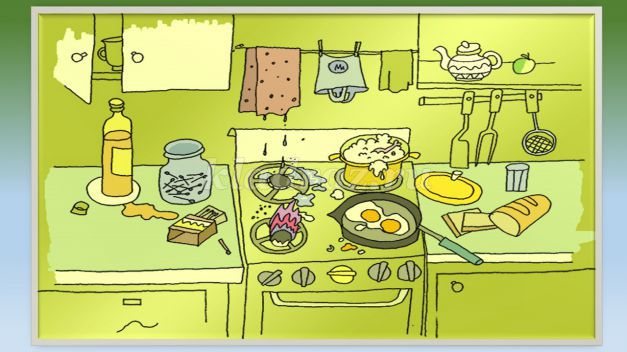
Task 4. -Name five safety rules in everyday life that begin with “NOT”.

Task 5. -Solve the puzzles and explain what danger these objects pose. BACK" + 'GLASSES (MATCHES) DUCK" + SOUTH (Iron) ROSE' + 'BRANCH (ROSETTE) WHALE' + 5″ + CURRENT (BOILING WATER) 'MIG + 'WOLF + A (NEEDLE) L=N FALSE' (Knife ) 'ONION + JUICE' + MUSTACHE' (Vinegar) Task 6. -Name the rules of behavior on the street starting with NOT
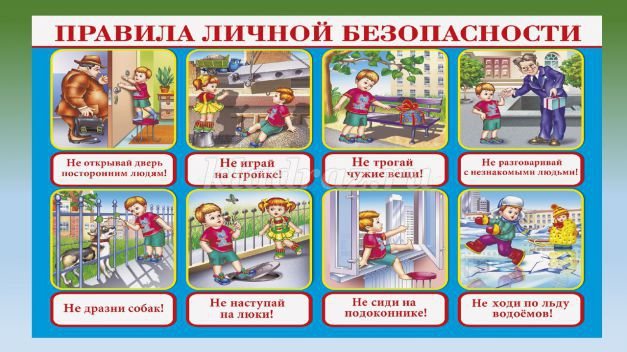
-Here are a few more rules. • DO NOT linger on the street on your way home from school. • DO NOT play outside when it is dark. • DO NOT let a stranger into your home. • DO NOT go anywhere with a stranger. • DO NOT get into a car with a stranger. • DO NOT meet people on the street. -And if suddenly an unpleasant situation happens, you need not to get lost and be able to quickly find a way out. Remember some rules. -Don't be too self-confident, don't act provocatively. -Try to suppress the enemy psychologically. -Speak to him boldly, don’t get confused, don’t let yourself be intimidated. -You can apply psychological pressure. Let the criminal believe that you are waiting for your dad or an adult relative, looking for a dog. You need to show that you are not afraid and say in a loud voice: “Rex! Leopard! To me!" Or run up to any house (as if it were your house) and shout under the windows: “Dad!” -How to get outside help? -First of all, you need to attract attention. -What is the best way to shout to get attention? (Fire!) -What can you do while running past a car? (Hit it to make the alarm sound.) -You are running past a group of people, what are your actions? (It’s better to crash into this group.) -What if you run past a shop window? (Hit the glass to make the alarm sound.) -How else can you attract attention to yourself? Task 7. -Decipher the warning text: coast + 'height(s) + no' + sign + 'comet'" + "'street (Beware of the stranger.) Task 8. -Listen to the quatrain: Gleb’s mom is at work. Suddenly his aunt approaches him: “Here’s some candy, dear, Let’s go with you to the zoo!” -Assess this situation. What would you do? Listen to the continuation. The boy didn’t go with his aunt: That’s very good! There is no need to take sweets and chocolate from strangers! The teacher will take us to the zoo, to the cinema, or on a hike. There is no way to forget, who are enemies and who are friends. Task 9. -Game “Finish the poem.” Every literate child must know firmly from the cradle: If you are invited to go swimming, To appear in TV, They promise to give you candy, Answer firmly... (“HET!”) They will offer you a monkey, Or even a bank of money, Or even a ticket to the circus Answer firmly... (" NO!”) They will invite you to fly to the Moon, Ride an elephant... There is a simple answer to everything, You must answer... (“HET!”) -Let’s talk about what to do if they are trying to lure you somewhere. -On the street, a stranger (man, woman, peer) approaches you and offers to watch an interesting film together, go for a ride in a car, go to a cafe, buy something cheap, or look at kittens. -Remember! A normal and decent stranger will never invite you without your parents: not to the sports section, not to the ballet school, not to the museum, not to the zoo, not to play on the computer at work! - Of course, the most reliable thing is not to enter into conversations with a stranger at all, it’s better to step aside. Very often they try to catch children with a cunning hook: “Yeah, so you’re afraid, scared, right?” You must remember once and for all that courage and stupidity are two different things. -Never allow a stranger to touch you. Know how to say “no” to anyone who makes you suspicious, hurts or harms you. You can interrupt the unwanted actions of a stranger by running away from him or loudly calling people for help. Task 10. -You saw a package on the street, or a beautiful toy, or a cell phone, what would you do? Anton was walking in the yard and he saw the suitcase. But Katya said sternly: “Don’t touch the suitcase, Anton, it’s dangerous to open it! This is clear even to a cat: By opening it, you can cause a terrible explosion!” Task 11. - Listen to the proverbs and explain their meaning. “Trouble comes to those who seek it” “Not every find is a treasure” “Not every person you meet is a dear friend” “Beware of troubles while they are not there” - Remember all the rules of behavior that we remembered today.
Teacher-psychologist, State Budgetary Institution of Further Professional Education of the Russian Orthodox Church: _______________ N.S. Zubrikhina
What should a child know before going outside?
Don’t be lazy, tell your child every day that communicating with strangers on the street is dangerous, you shouldn’t take things with unknown contents from them and escort the elderly person home. There are plenty of adults for this who are able to solve the problem of an unlucky passerby. If force is used against a child on the street, he, of course, needs to scream loudly and call for help. Also strictly forbid getting into a car with strangers or telling strangers where your parents are at the moment.
Traffic rules are one of the first knowledge that a child must learn by heart if he moves from point A to point B unaccompanied by adults. The student must clearly understand that he is approaching the roadway, even in his own yard.
The child learned the first and last names of his parents in kindergarten. To expand knowledge in this area, you should learn about the address of permanent residence and telephone numbers of mom and dad by heart. This information may be necessary for police officers if the baby gets lost and does not have a mobile phone with him.
It’s also not worth demonstrating to a child the social status and level of family wealth on the street. Girls should not wear jewelry or other bright accessories when they are walking alone. This attracts intruders, antisocial individuals, and can lead to unpleasant consequences. The key to the apartment should also not be hung up for everyone to see; it is better to hide it away in your pocket.
Lightning, thunderstorm, hail - a student should know about dangerous natural phenomena and how to behave correctly in these cases. You should also not approach or pet stray dogs. They can be carriers of dangerous diseases or simply turn out to be a fighting breed, which is generally fraught with tragic events.
A school-age child can already be informed about social diseases such as tuberculosis, HIV, and hepatitis. And correctly explain in what cases a person can become infected with them.
Behaving safely is not at all difficult if the child is familiar with the rules from an early age. Forewarned is forearmed! After all, safety on the street for children should be paramount.

The most dangerous situations: how to teach children to react correctly
As we have already found out, suspicious strangers are the most unpredictable threat. Which means we need to talk about it first. What a child should know about this:
- Under no circumstances should you go anywhere with someone without prior approval from your parents;
It’s one thing when a mother says in the morning that her grandmother/nanny/sister will pick her up from kindergarten, and in the presence of a teacher, and quite another thing when someone comes and says that “he made an agreement with mom.” Believe - only parents!
- Do not engage in conversations with strangers;
Some people know how to speak in such a way that even an adult will believe them. Therefore, it is better to immediately leave the conversation, try to go to a place where there are a lot of people around and say loudly: “I don’t know you, my mother doesn’t allow me to talk to strangers.”
After all, there are simply sociable old ladies, for example, who, out of the simplicity of their souls, begin to ask the kids about something. Therefore, it is better to let the child learn this phrase.
And, of course, the rules of behavior on the road - there is transport everywhere, usually there is an entrance to every yard.
- Which side to go around a car, bus, tram;
- At what light to cross the roadway and in what place;
- How to determine from a traffic light what to do for each color;
- Where is the pedestrian zone and at what times should you not go out onto the road?
Take into account what is located near your home and the place where the child walks. Evaluate for yourself which of these are dangerous and how to avoid accidents. A construction site, a pond, a factory, a landfill - any of these places can pose a threat.
And remember - you need to start teaching your child how to behave safely on the street from the age of stroller. And at 1-2 years old this should be purposeful, daily work
Listen to the seminar “Attention: Walk! How to walk with a baby?
In this seminar, you will receive answers to the questions:
- how to teach a child to walk on the street holding a hand;
- how to stop running away from mom;
- what to do with conflicts between children on the playground?
- If a child is given gifts or strangers start talking, what should the mother do?
- rules for a comfortable, understandable walk that teaches your child to obey you!
>>>Click on the link to view the full seminar program!
It’s better to play it safe, it’s better to tell the same thing several times than to regret it later. Let the children always be healthy and happy!
- How to make a child obey?
- How to behave with a child?
- How to develop independence in a child?
Teen safety on the street
Many teenagers drive around the city themselves, go for walks with friends, visit cinemas and cafes, and may stay late in the evenings. All this significantly increases threats to their safety, especially taking into account many psychological characteristics of adolescents. They want to seem like adults, they are capable of unnecessary risks and bragging, but on the other hand they are still inexperienced, not confident in their abilities, and are experiencing many physical and psychological problems.
As a rule, the greatest dangers come from criminal elements, pedophiles, aggressive peers or older children, as well as from large dogs. The most dangerous time is after sunset, and the most dangerous places can be considered deserted areas or small enclosed spaces. These are landfills, nooks and crannies, dead ends, entrances and so on.
The main thing in the rules of behavior on the street is
never lose your composure
What is the feeling of fear? If you are scared and its main symptoms appear: tremors of the limbs begin, you feel cold inside, your stomach hurts, your hair stands on end - this does not mean that you have lost control of the situation, on the contrary, your body has prepared you as much as possible for possible danger. All this has a simple physiological explanation. Adrenaline is injected into the blood, the body receives a powerful charge of energy (hence possible tremors), oxygen supply to cells improves, nerve endings reduce sensitivity so as not to be distracted by pain, blood drains from organs that are not needed at the moment and flows to the muscles (hence the feeling of cold and sucking in the pit of the stomach). The senses and memory are enhanced; in fact, a person in this state becomes several times stronger than usual. And this can also be your advantage over aggressors. The main thing is to learn to take control of the body, for example, excess adrenaline can be burned by tensing the muscles, which at the same time warms them up and prepares them for a potential fight or flight.
In general, it is always difficult to face sudden danger, and even more so if the teenager is unprepared. Therefore, we recommend that every child, regardless of gender or physical characteristics, take short self-defense courses. They can have a huge effect on the safety of a teenager. Often those who attack a lonely girl or a skinny guy count on quick success and are not ready for active resistance. Self-defense skills are not intended for a full-fledged attack, they are more needed in order to fight back and escape.
Rules for safe behavior on the streets for teenagers
ü Always avoid sparsely populated and poorly lit areas; if you find yourself in such a place, then go closer to the middle of the street, away from places where criminals can hide;
ü Try not to wear items that could be perceived as valuable, even if they are counterfeit. For example, do not wear gold watches or jewelry that is or looks valuable;
ü Always analyze moving objects and evaluate them from the point of view of potential danger; if you see something dangerous, then look for an opportunity to avoid it. Change the route, join the adult couple walking ahead, etc.
ü Remember the typical dangers. Always avoid groups of young people, as well as drunk people of any age and people with a criminal or suspicious appearance, be suspicious of unknown cars: tinted windows, license plates stained with dirt, a car that is too expensive or, on the contrary, deliberately cheap, or one that simply does not correspond to the status of the area;
ü When passing by suspicious individuals, do not look at them point-blank, they perceive this as a direct challenge, so it is better to lower your eyes;
ü If someone you don’t know tries to talk to you, then don’t engage in conversation, always continue on your way. It’s better, as a last resort, to then pretend that you didn’t understand that they were talking to you. Go home as soon as possible or to the nearest crowded and illuminated place;
ü If someone is following you, then go where there is a lot of light and people. Or at least go to the lighter side of the street;
ü Never go anywhere with strangers or get into anyone’s car. If you see that you are in danger, then scream, call for help. If you're near houses, throw a rock or heavy object at someone's window, don't be afraid to break it. There is a chance that a person will look out and call the police, this will scare off the attackers;
ü In places where there are people, if they try to stop you and take you aside to talk “for a minute,” do not listen, go your own way, also try to approach a store, a bus stop, etc.;
ü If criminals demand things and threaten with violence, give them everything - life is more valuable than any valuable thing;
ü Always try to remember the signs of your attackers as much as possible, but never openly look at them - this may anger them. Do not behave aggressively and defiantly;
ü If you have been subjected to physical or sexual violence, you must immediately inform your parents, contact the police, write a statement, undergo a medical examination and be sure to record everything. Don’t listen to criminals telling you not to tell anyone – this is their standard threat. The best defense is to notify law enforcement agencies, then the police will know who to look for in case something happens to you in the future and they are simply afraid to touch you;
Rules for safe behavior in crowded places
There are situations when you find yourself in a large crowd. These could be football fans, demonstrators, riot instigators, etc. In general, the main safety rule is to stay out of the crowd! But if you do, then at least use simple tips that will help protect you:
ü Try never to fall in a crowd, it can trample you to death. If you do fall in a running crowd of people, immediately roll over onto your stomach and get up on all fours. You can also try to get up from all fours using the principle of a low start, rise up and move towards the crowd, standing up to your full height;
ü Don’t give in to the general hysteria, usually in a crowd people do strange things just “for company,” for example, breaking windows and throwing stones at police. Remember that now you are in a crowd, and tomorrow you can sit alone in a police station and won’t even remember who was next to you;
ü Avoid being at the edge of a large crowd, the first ones are often pushed by those behind and they fall, and the first ones can also be crushed against the fences, or they can be hit by the batons of the police special forces. If you know that the concert or football will end soon and there will be a large crowd, then leave either much earlier to avoid a crush, or, conversely, later, but just don’t walk in front;
ü Never push the person in front, maintain a uniform rhythm of movement, the desire to speed up usually leads to the opposite effect;
ü Avoid congestion in narrow places as much as possible; do not walk near the edge, as you may be pressed against a glass display case or a sharp corner and be crushed or injured.
Dangers for teenagers on the Internet
ü Danger of becoming a victim of a pedophile or criminal (theft, extortion, fraud, blackmail, violence and more serious crimes);
ü Involvement in the porn industry and criminal activity. Information inciting suicide;
ü Involvement in online gambling (the risk of becoming a lawbreaker, a victim of gambling addiction, endangering the financial well-being of the family).
ü Online hooligans who operate mainly on computer game sites, chats and ICQ (profanity, bullying, intimidation, offensive messages addressed to a teenager);
ü Purchases and sales over the Internet without parental consent (teenagers can go to sites selling prohibited substances and goods. When trying to sell something over the Internet, a teenager at least provides a phone number and home address).
ü Every seventh schoolchild has a tendency to Internet addiction.
Every eighth student spends 1 to 10 hours a day on the Internet. At the same time, schoolchildren behave at risk: more than half of the high school students surveyed often give out their home phone number (79%), mobile number (65%), school or class number (60%), their photographs and photographs of relatives (58%), on the Internet. your email address (51%).
More than 75% of minors encounter aggression, sexual harassment, and calls to harm themselves and others on the Internet; more than 60% of respondents experience psychological pressure online; almost two-thirds of respondents experience insults and humiliation.
Basic rules for teenagers to work safely on the Internet
The main rule of safety is a trusting relationship between a teenager and parents
Talk to your children about their online friends and what they do, just as you would about real-life friends. Ask about the people teens communicate with using instant messaging, chat rooms, and message boards, and make sure they know these people.
Teach your children never to give out personal information through email, chat rooms, instant messaging, registration forms (better use a site with the same information that does not require registration), personal profiles, and when registering for online contests. Configure security and privacy settings in your Internet browser.
Teach your children to tell you if anything or anyone online bothers or threatens them. Remain calm and remind your children that they are safe if they told you. Praise them and encourage them to come again if the incident happens again. Show your child how to get rid of unwanted communication.
Talk to your children about a healthy sex life. Learn how to identify and what to do if your child is a potential target or victim of online sexual abuse. In extreme cases, provide information about a hooligan or criminal through the website of the Ministry of Internal Affairs www.112.ru - the law enforcement portal of the Russian Federation. Section – Urgent communication/report to law enforcement agencies. In the line “Specify the department”, select “Ministry of Internal Affairs of Russia”, check the box: “I have read and agree with the rules and procedure for contacting the Ministry of Internal Affairs of Russia.” Next, in the “Where” field, select “Criminal Investigation Department of the Ministry of Internal Affairs of Russia.” You need to describe the situation briefly, as accurately as possible, if possible, provide a link to an Internet resource or account, list all saved materials: screenshots, transcripts of correspondence, chat conversations, printouts of phone calls, etc.
Teach your children to distinguish facts from opinions. To obtain information, advise using the websites of institutions and organizations that have earned universal respect for the reliability of the information posted.
Make sure teens talk to you before buying or selling anything online.
Discuss online gambling and the risks with your teens. Remind that this is illegal.
Suggest alternatives. If you think your kids are only interested in online entertainment, try offering them an offline version of one of their favorite games. For example, invite him to read books on relevant topics.
If there is no mutual trust, we recommend setting up Personal Control
Create a list of internet house rules with your teens' input and be adamant about following them. You should specify a list of prohibited sites, limit your daily time spent on the Internet, and guidelines for communicating on the Internet (including in chat rooms). Place the rules near where you access the Internet.
Make it a habit to check out the sites that teenagers visit. Make sure you don't visit sites with offensive content.
Insist that they never accept face-to-face meetings with online friends. Keep computers with Internet connections in common rooms. Your children should never use the Internet to bully, gossip, or threaten others.
Watch for the main symptoms of Internet addiction: problems with studying, neglect of family and friends, increased amount of time spent on the Internet, skipping meals. Help your child overcome this addiction if it appears.
Software control
Use inappropriate material blockers to complement parental controls. Use standard security settings and Internet browser history. A list of Russian parental control software can be found on the Internet Safety League website.
Help teens protect themselves from spam. Teach your teenager not to give out his email address on the Internet, not to respond to unwanted emails, and to use special email filters.
Remember that a smart teenager can neutralize any program and setting. Therefore, your ultimate goal is to develop self-control, discipline and responsibility in children.
Increase your level of computer literacy to know how to ensure the safety of children: read specialized literature, consult with experts, attend special courses.
Information on safe work for teenagers on the Internet on the sites:
Center for Safe Internet in Russia: https://saferunet.ru
Culture and ethics on the Internet: www.etika.ru
Safe Internet Forum: www.safor.ru
Children of Russia Online: www.detionline.com
Safe Internet League: www.ligainternet.ru
Article from the site https://citymolod.ru/
Rules of behavior on the street
Safety rules help you avoid becoming a victim of an accident. Therefore, parents must take care that the child knows how to use them.
Safety on the street
Among other topics, special attention should be paid to the following issues:
- Traffic rules
- How to behave if you are lost.
- Conversation with a stranger in an elevator.
- Ice in winter.
- Spring and winter are a dangerous time of year.
How to teach safe behavior to children
Developing street etiquette skills should begin in childhood.
You can introduce preschoolers to the essence of problems in a playful form, acting out acute situations with their favorite toys. Imishka dolls can be passengers in transport, or cross a toy street.
Real examples are equally important. If parents respond kindly and affably to other people, dad helps mom put on her coat, holds the door and offers his hand, the child will do the same without unnecessary reminders.
Schoolchildren willingly participate in conversations and discussions of important issues. They are able to prepare and give an interesting presentation on a given topic for class.
Transport safety
Many children have to travel part of the way home in public transport. Parents can make a small reminder for their offspring:
- Names of stops.
- Route numbers and types of transport.
- Schedule .
Subway behavior
Here children must strictly follow the established order:
- Have a travel document;
- Understand how passage through the turnstile is carried out;
- Don't run up the escalator;
- Do not go beyond the waiting platform;
- Do not try to squeeze through the closing doors of the carriage.
Rules of conduct in ground transport
On buses and minibuses, you need to take a comfortable position and have reliable support that will prevent you from falling during the jolts of the transport. You can’t sleep and miss the required stop.
Generally accepted norms of order help you feel confident even when there are crowds of people: in shops, cafes, sports centers, etc.
CHILDREN PASSENGERS
In public transport:
It seems that there is nothing difficult here - the child got on the bus, sat down and drove off, however, passengers also need to follow the Rules.
The danger of traveling in public transport is usually associated with sudden braking, for which passengers are always unprepared.
Parents who allow their children to travel independently on public transport need to explain to their children the following rules:
1) It is safe to wait for public transport only at the landing site, and if there is none, then on the sidewalk or side of the road, but in any case, away from the roadway.
2) Entry into a minibus can only be done after the vehicle has come to a complete stop.
3) While in public transport, you must hold firmly to the handrails.
4) You should give way to elderly and sick people - this is not only a rule of politeness, but also safety - after all, it is more difficult for them to react to sudden braking and stay on their feet.
5) It is prohibited to distract the driver from driving, or to open the doors of the vehicle while it is moving.
6) You should prepare for the exit in advance so that you don’t have to rush. When leaving the transport, you should not rush either. Especially if you need to cross to the other side of the road. It is necessary to clearly understand: you can only cross the roadway at a pedestrian crossing.
Safe behavior on the road
To prevent child injuries on the road and avoid any accidents, children should pay attention to the following:
- It is necessary to look not only at the traffic light, but also at potential dangers: cars that exceed the speed limit, drive around corners, do not brake in front of a pedestrian crossing, the characteristics of the movement of an ambulance and a fire truck;
- from early childhood, when crossing the road with your child, discuss the rules along the way: “When do you think we can cross? Which way to look? Etc.";
- teach your child the habit of stopping before crossing the road, using not only his vision, but also his hearing, especially in places where it is difficult to notice a car;
- It is also useful to make eye contact with the driver before crossing the road to make sure that he is slowing down.
In order to protect your child’s movement along the roadway, purchase bright, reflective clothing for your baby, or special reflective elements that can be attached to clothing, and teach your child to wear them, especially in the evening, in cloudy and foggy weather.
Safety during the “Crawling” stage
Be careful when using medications or cleaning products. Many accidental poisonings involve medical or household chemicals.
- Keep all cleaning products, insecticides and medications in their original containers and out of reach of your baby.
- Place medications that can be easily removed from the packaging in a first aid kit that the baby cannot open on his own.
- Never call a medicine “candy.”
- Have an emetic ready, but do not give it to your child until you have received this recommendation from your doctor or emergency room.
- Write down and keep in a visible place important telephone numbers of nearby hospitals and medical centers.
If, despite all your efforts, the baby is poisoned, act clearly and do not panic:
- When calling an ambulance, do not let go of your child and keep the package with the substance that caused the poisoning ready;
- tell the child's age and the name of the medicine or chemical to which he was exposed;
- follow all the instructions that the specialists will give you over the phone.







